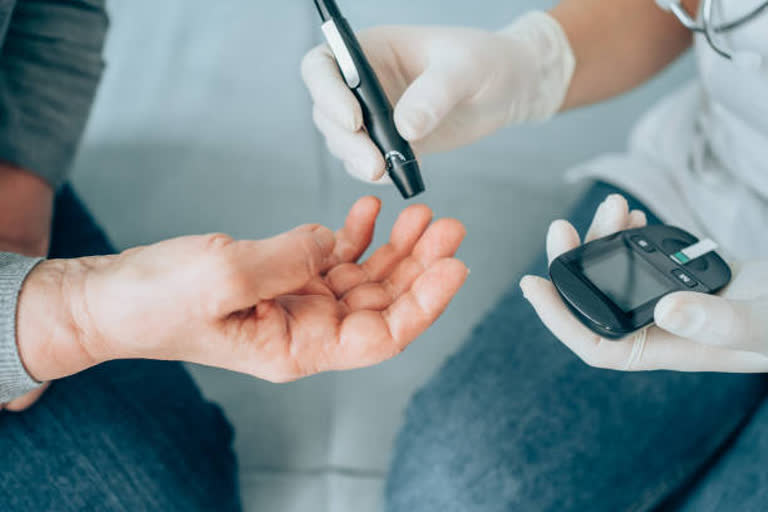Hyderabad: Approximately 20 years ago, the Finnish Diabetes Prevention Study demonstrated that individualised nutritional and physical activity interventions reduced the incidence of Type 2 Diabetes Mellitus (T2DM) in an at-risk population. More recently, the delivery of healthcare via digital apps has been shown to have a beneficial effect on health and nutrition, including improvement of glucose metabolism.
A recently published RCT comparing digital DPP to small-group sessions found that the former was superior for T2DM prevention. The gap in our knowledge is whether the combination of digital and face-to-face interventions is more effective than each one in isolation. This real-world Randomised Controlled Trial (RCT), again from Finland, examined the effectiveness of combined digital and group-based face-to-face delivery of lifestyle interventions to address risk factors for the development of T2DM in an at-risk population.
In The Lancet Regional Health – Europe, Lakka et al report the findings of their trial, which was a one-year, multi-centre, unblinded, pragmatic RCT conducted in Finnish primary healthcare in adult patients at increased risk of type 2 diabetes mellitus. 2907 patients, 80% of which were women and with a mean body mass index 31.1 ± 5.4 kg/m2 were randomised into a digital lifestyle intervention group (n = 967), a combined digital and group-based lifestyle intervention group (n = 971) and a control group (n = 969) receiving usual care.
The multifactorial interventions were not focused on weight loss but on changes in daily habits using three predefined theories - the self-determination theory promoting motivation to change habits that you have personally chosen (i.e., autonomy)self-regulation theory promoting self-monitoring, goal setting and action planning, and habit formation, which enables healthier habitual behaviour through regular repetition. The face-to-face intervention was a six-session group coaching programme.
The primary outcomes were 1-year changes in the quality of diet assessed by the Health Diet Index, total physical activity, body weight, fasting plasma glucose and 2-h plasma glucose after an Oral Glucose Tolerance Test (OGTT). Thus, the interventions were novel, and the outcomes included not only anthropometrics and metabolic parameters but evidence of a holistically healthier lifestyle.
Also read: Study looks at why late-night eating increases obesity risk
The key finding of the trial was a superior improvement in the nutritional quality consumed by the group that underwent the digital plus face-to-face intervention compared to the other two groups. The nutritional content of meals in the digital plus group compared to the control intervention. Unfortunately, this did not translate to a significant difference in weight or metabolic outcomes. The drop-out rate was surprisingly low, at approximately 15% in all the groups.
There are many strengths to this trial; the sample size, the intervention was delivered in the community, and the patients were well phenotyped despite a large number of participants. Habits are deeply ingrained in our daily behaviour, and changing them can be challenging. The intervention used succeeded in changing some of the participant's habits to healthier ones.
The nature of the trial was pragmatic, suggesting that the intervention could be implemented readily in routine clinical care and probably at a low cost. Digital interventions are a novel method of delivering healthcare and are particularly relevant to the post-COVID era. Digital technologies (e.g., mobile phones, tablets) have become extremely popular and enable users to personalise the intervention to their specific needs. Being able to access behavioural and physiological feedback increases self-awareness of the impacts of lifestyle on health outcomes and leads to change in behaviour.
Whilst the absence of weight loss or metabolic improvements may come as a disappointment, a healthier relationship with food and the adoption of more physical activity, better sleep, and stress management are outcomes that are valued greatly by people who live with obesity or metabolic syndrome. This seemingly paradoxical improvement in quality of life is frequently observed in routine clinical care and in the research setting.
Potential explanations for the absence of major metabolic benefit are that a large proportion of participants (44%) did not have glucose intolerance at baseline and that no pharmacotherapy like metformin was used, as in previous large-scale diabetes prevention trials. However, even the modest improvements in adiposity and fasting insulin observed can have a disproportionately large impact on population health when applied at a large scale and probably at a favourable cost-benefit ratio. The digital intervention used in this trial could be improved by adding modules to promote weight loss in order to enhance the observed improvements in diet quality.
Delivery of face-to-face group sessions longer term, but at a lower frequency, would enable participants to maintain their health gains. The selection of patients with confirmed pre-diabetes based on actual measurements of glycaemia (e.g., HbA1c) is likely to enhance the effect size of these interventions. Digital platforms are very versatile and popular, thus offering tremendous opportunities for large population-scale health interventions of good quality and low cost. At the same time, the importance of face-to-face interaction should not be forgotten or ignored. (Lancet)



